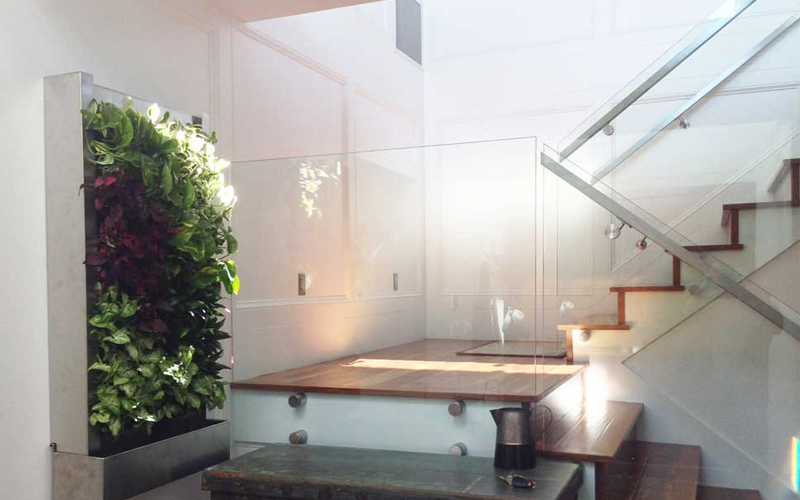Professional Practice
Applying Ecological Design: Indoor Plants
 Residential living wall design and installation / Vertical Landscape Architects
Residential living wall design and installation / Vertical Landscape Architects
People in industrialized countries can spend up , increasing their exposure to indoor air pollution. Indoor plants can dramatically improve human productivity and health, and can effectively a number of volatile organic compounds (VOCs) that come from adhesives, furnishings, clothing, and solvents. Indoor plant systems range from common house plants to more complex indoor-outdoor vertical walls.
We have a biophilic response to plants. Research has explored how exposure to plants, or even images of plants, indoors and outdoors can improve productivity and create a sense of well-being.
Indoor plant benefits include:
- Improved indoor air quality: With the right plants, indoor plants can reduce up to 87 percent of common household air pollutants.
- Improved health: Up to ten percent reduction of rates of asthma, headaches, and respiratory problems.
- Increased productivity: Productivity rates can increased by 20 percent in environments with superior air quality.
- Reduced energy usage: Energy usage can be reduced by 15 percent because less air circulation is required with indoor plants.
Sources: and , The Dirt, American Society of Landscape Architects
Organizations
, U.S. Green Building Council
Resources
, Treehugger
, GreenBuilding.com
, Clean Air Gardening
, Terrapin Bright Green
Research
“,” Timothy Beatley, Island Press, 2016
"," B.C. Wolverton. Penguin, 1998
"," Barney Burroughs and Shirley Hansen. Fairmont Press, 2008
"," Barbara Pleasant. Storey Publishing, LLC, 2005
“,” Igor Josifovic, Judith de Graaff, Callwey Verlag, 2016
Government Resources
, U.S. Environmental Protection Agency
, U.S. Environmental Protection Agency
Projects
Vertical Landscape Architects